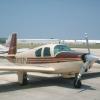Removal of Wet Compass
-
Members Online
- DXB
- INA201
- NickG
- redbaron1982
- TCC
- 1967 427
- 67 m20F chump
- spaceman39a
- Ibra
- toto
- DMM
- wingslevel
- Nippernaper
- Brian2034
- Kelpro999
- Aerodon
- MikeOH
- PeterRus
- ragedracer1977
- N201MKTurbo
- Jake@BevanAviation
- AH-1 Cobra Pilot
- takair
- patrickf
- Slick Nick
- tim417
- dzeleski
- alextstone
- Fix
- KLRDMD
- eman1200
- LANCECASPER
- Andy95W
- Nico1
- Steve Dawson
- BrentS
- ElkoRandy20J
- Deb
- Max Clark
- Scottknoll
- Mikey30V


Recommended Posts
Join the conversation
You can post now and register later. If you have an account, sign in now to post with your account.